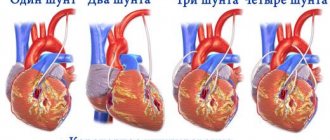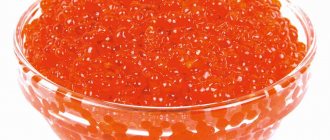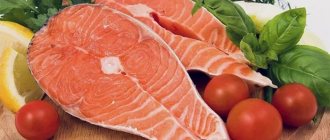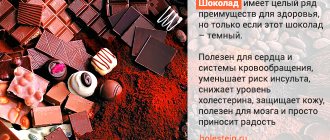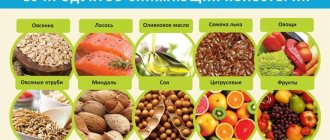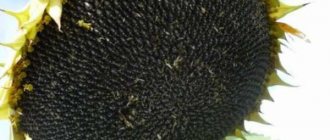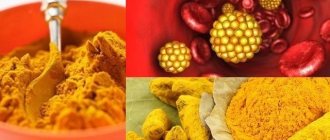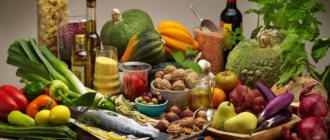Signs of high cholesterol
For a long time, high cholesterol levels in the blood may not manifest themselves in some people, so after 40 years it is recommended to take a lipid profile once a year.
This is a special analysis that determines the level of triglycerides (fats), total cholesterol, as well as its individual fractions. It turns out that cholesterol can be not only “bad” (as it is in low- and very low-density lipoproteins), but also “good” (cholesterol in high-density lipoproteins). That's why balance is so important. The first symptoms usually appear many years after the onset of atherosclerosis, the deposition of cholesterol plaques in the arteries. This process can lead to the development of coronary heart disease, heart attack, stroke, and damage to peripheral arteries. Manifestations such as shortness of breath, chest pain, loss of coordination, changes in speech, etc. indicate an advanced pathological process. But the most important thing in maintaining health is to take care of your body in advance (before organic changes develop). Comprehensive prevention aimed at eliminating the cause of increased atherogenicity of blood plasma is important.
Diagnosis of the disease
The indication for preventive screening for cholesterol is often reaching 40 years of age. To make sure there is no risk of plaque formation, you need to check your blood. It is enough to donate liquid from your finger for a general analysis.
In the results you can notice the separation of cholesterol:
- Good – HDL. Normal levels are above 1 mmol/liter.
- Harmful - LDL. The concentration is not more than 5.2 mmol/liter.
KA is also determined - the ratio of dangerous and necessary cholesterol for humans.
- When there are no problems, KA is less than 3.
- In the presence of diseases, for example, atherosclerosis, a value of 5.
If significant presence of LDL is detected, the patient is examined.
Diagnostics helps determine methods for getting rid of cholesterol; doctors themselves often recommend using courses of folk remedies.
Causes of high cholesterol
Approximately 80% of cholesterol in the body is synthesized in the liver, the remaining 20% comes from food. If this balance shifts in one direction or another, an increase in the atherogenic index is possible.
Increased levels of cholesterol in the body are usually associated with the following predisposing factors and circumstances:
- overweight and obesity, with waist size playing a special role, because indirectly reflects the amount of abdominal fat in the body (the norm for this indicator for women is up to 88 cm, and for men – up to 102 cm);
- eating fatty foods - we are talking mainly about animal fats, which are rich in saturated fatty acids (the daily diet should contain up to 15% fat, but most of it should be in the unsaturated fraction - vegetable oils, seafood and fish);
- sedentary lifestyle - the less a person moves, the higher the likelihood of “bad” cholesterol attaching to the walls of blood vessels and an increased risk of atherosclerosis;
- age 50+ - women who have entered menopause are especially at risk, because during reproductive age, estrogens had an additional protective effect on blood vessels, but men are also vulnerable, so prevention is important for both sexes;
- complicated heredity - if immediate relatives suffered from atherosclerosis or early strokes/heart attacks, you should regularly check the level of cholesterol in the blood and, if the concentration is elevated, even in the absence of clinical signs, follow a diet and more;
- smoking (passive and active) – the vascular wall is damaged by both nicotine and combustion products.
Obviously, age and heredity cannot be influenced - these are non-modifiable risk factors. However, all the others can be influenced to reduce their adverse effects to a minimum. This is what prevention is all about. Proper nutrition, quitting smoking and physical activity (at least 30 minutes of walking a day) will help blood vessels function normally.
Other Important Recommendations
At the moment, no medical community dares to recommend natural remedies as the only method of treatment. It will take several more (perhaps even decades) years for clinical observational data to become firmly established in the health care systems of various countries. At the moment, the treatment regimen for dyslipidemia cannot be done without drugs and is presented as follows:
- Lifestyle changes. Involves regular walks in the fresh air (parks, coniferous forests). The recommended number of steps per day is 8,000 (according to the World Health Organization).
- Quitting bad habits (alcohol, smoking, drugs).
- Body weight control. With a weight loss of 10 kg, the risk of sudden vascular death drops by 20%, and in the presence of diabetes mellitus - by 30%. A decrease in body weight by 15 kg has a pronounced effect on systolic and diastolic blood pressure - a decrease of 10 mm. rt. Art. and by 20 mm. rt. Art. respectively.
- Prescription of medications (fibrates, statins, bile acid sequestrants, vitamin PP preparations).
- Follow a diet limiting fatty, spicy, salty, and sweet foods.
- In case of severe dyslipidemia, prevention of complications (Aspirin, Xarelta, etc.).
What increases blood cholesterol
Cholesterol levels can be increased by poor nutrition and problems with the liver, where resynthesis of this substance occurs. The most dangerous products are recognized:
- fatty meats, chicken skin, offal, sausages and semi-finished products;
- Trans fats are chemically modified vegetable oils that are given the appearance of butter (margarine). There are especially many trans fats in confectionery products;
- fatty types of dairy products - you should not refuse such food, it is important to follow the recommended standards;
- fried foods – heating oil to extremely high temperatures leads to the formation of trans fat and carcinogens;
- easily digestible carbohydrates in rice, sweets, soda, breakfast cereals, etc. – they provoke inflammatory reactions in the body from the blood vessels, thereby increasing the atherogenicity of the plasma;
- Coconut oil is a leader in the content of saturated fats, which lead to an increase in “bad” cholesterol.
To minimize the risks of atherosclerosis, it is important to adhere to a diet, excluding harmful foods from the menu.
Any conditions that negatively affect the liver also alter cholesterol metabolism. Increase the likelihood of developing atherosclerosis:
- liver dysfunction;
- hepatitis;
- fatty liver;
- alcohol abuse;
- work in chemically hazardous production;
- inhalation of household chemical vapors, etc.
If possible, as part of prevention, you should adhere not only to diet menus, but also protect the liver from adverse internal and external influences.
To begin with, we will talk about drugs that affect the condition of blood vessels, and below we will give examples of products that can lower the content of “bad” cholesterol.
Herbal recipes
Many herbs are most effective against atherosclerotic changes in blood vessels as part of multicomponent preparations, which contain herbs and plants with different spectrum of action.
Such herbal preparations can solve several problems with blood vessels at once and seriously improve the general condition of the body.
Infusion of 5 herbs for cholesterol
To collect you will need:
- 50 grams of dried yarrow stems;
- 30 grams of hawthorn inflorescences (it is acceptable to use crushed fruits);
- 30 grams of dry mistletoe leaves;
- 30 grams of small periwinkle (stems);
- 25 grams of dandelion leaves.
The herbs are mixed thoroughly. To prepare an infusion that cleanses the blood vessels of the brain, take 1 tbsp. spoon of the dry mixture and pour a glass of boiling water. Let it brew for an hour. You can drink the infusion 1 glass up to once a day. Therapy time is limited to two months.
Contraindications: high blood pressure, peptic ulcer, varicose veins.
Tibetan recipe
The composition of the ancient Tibetan infusion for the treatment of blood vessels is simple and accessible. You only need two simple ingredients: garlic and alcohol. The recipe, invented by a Buddhist monk, has a number of unique properties: cleansing cholesterol plaques, removing fats and limescale from the walls of blood vessels.
Garlic is a powerful antiseptic, has a rejuvenating effect, stimulates metabolism, and prevents cancer.
Garlic in alcohol:
- 200 ml medical alcohol;
- fresh garlic – 300 gr.
A prerequisite for preparing an effective medicinal composition for blood vessels is freshly harvested garlic.
Only fresh cloves contain the largest supply of useful substances. Garlic is peeled and pounded in a mortar, the pulp is poured with alcohol. The mixture is transferred to a glass or ceramic container with a tight lid.
Leave for 10 days, placing the container in a place with a temperature no higher than 18 degrees. During this period, it is necessary to shake the mixture periodically. The finished composition is filtered and stored in the refrigerator.
The infusion is taken before meals. The regimen for taking the medication for blood vessels involves gradually increasing the dose - starting with 1 drop and increasing to 5 drops. After this, they begin to reduce the dose.
Contraindications: age under 18 years and over 70, pregnancy, lactation, epilepsy, exacerbation of gastritis, hemorrhoids, kidney and liver diseases, mental disorders. During the treatment of blood vessels according to this recipe, you should not drink coffee and tea, and increase your water consumption.
Dietary supplement for high cholesterol
Nutraceuticals are a new class of active food additives. Among them, cytamines – peptide bioregulators – stand out separately. These are complexes of peptides, nucleic acids, minerals and vitamins that can exhibit an organotropic effect and restore the physiological functions of the body, correcting already developed complications and preventing new ones, acting on cause and effect.
Domestic scientists, using their own and world's best practices on the bioregulation system, have created a unique remedy, Vasalamin, specifically to strengthen blood vessels and fight atherosclerosis. This peptide bioregulator is obtained from the blood vessels of cattle and, therefore, its active components are identical to the structure of human vascular cells.
Vasalamin exhibits targeted action. It is delivered to target cells through the process of transcytosis, consisting of 2 phases - endo- and exocytosis.
- Enteric tablets are absorbed into the mucous membrane of the small intestine. The epithelial cell membrane bends into the cell to form a vesicle that contains the active components of the incoming cytamine. This is the stage of endocytosis.
- The vesicle is then transported unchanged to the opposite pole of the cell and fuses with its membrane. Active components are released into the surrounding (extracellular) space. This is how exocytosis occurs.
The alternation of phases occurs until the peptide bioregulator reaches the final target - the cells lining the blood vessels.
Vasalamin can influence not only the consequences of the disease, but also the mechanisms of its development. Restoring intercellular interaction makes it possible to increase the protective reserves of endothelial cells, helping them resist the formation of atherosclerotic plaques. At the same time, Vasalamin helps strengthen the vascular wall and prevent its destruction, and improve blood supply to all organs. Regular intake in combination with diet helps reduce atherosclerotic risks and normalize high cholesterol levels.
Vasalamin has a high safety profile. Unlike allogeneic drugs, which try to eliminate only the effect, in particular to normalize cholesterol balance, cytamines are well tolerated and do not cause side effects. At their core, they are the substances that are necessary for the correct functioning of the cell - the human body is waiting for them so that they can cope with the “breakdowns” that arise. Allopathic drugs are always foreign, so the reaction to them may be different; they interfere with physiological processes, changing their course in a different direction. Nutraceuticals are natural metabolites and integrate as organically as possible into ongoing biochemical reactions, directing them in the right direction. The safety and effectiveness of the action have been confirmed by a series of clinical and experimental studies, for which the corresponding certificates have been issued.
Peptide bioregulators help reduce increased levels of atherogenicity in blood plasma. And in combination with diet and other preventive measures, they give vascular health.
Where can I buy
In our store you will find a wide variety of folk remedies and ingredients for making them yourself. We deliver goods by courier throughout Moscow and the Moscow region, and by mail throughout Russia. In the capital, folk remedies for reducing cholesterol can be bought at one of the Russian Roots herbal pharmacies.
Attention! All materials published on our website are protected by copyright. When re-publishing, attribution and a link to the original source are required.
Diet for high cholesterol
To improve cholesterol balance in the body, it is important to eat right. The body should receive healthy foods and not harmful ones. They allow you to increase the proportion of high-density lipoproteins (“cleaners” of blood vessels) and reduce the proportion of low-density lipoproteins (atherogenic enemies). There are 3 classes of substances that must be present in the diet:
- Omega-3 polyunsaturated fatty acids, which are especially rich in fatty sea fish, avocados, and natural (unfried) vegetable oils.
- Hycosides – These can be found in grapefruit.
- Flavonoids contained in apples.
Now let's learn more about how to try to protect blood vessels using proper nutrition, and what you should include in your menu.
Avocado
This vegetable contains a lot of omega-3 acids, in particular eicosapentaenoic and decosahexoenoic acids. These substances prevent the negative effects of oxidative stress, which triggers the aging process. Omega-3 acids help neutralize free radicals that damage blood vessels. But it is precisely to the sites of damage that cholesterol molecules rush, trying to “patch up” the resulting holes. But instead of benefit, they only bring harm - over time, the cholesterol plaque can significantly increase in volume and lead to blockage of the feeding vessel.
In addition, avocados consumed as part of the diet are rich in potassium. By competing with calcium for binding sites, this mineral prevents the deposition of calcium salts, which make blood vessels fragile (elasticity decreases).
Fatty sea fish
This diet product is rich in unsaturated fatty acids, which are essential for the normal functioning of the heart and blood vessels. These are healthy fats from which “good” high-density lipoproteins are formed, which protect blood vessels. Sea fish contains a lot of protein and beneficial microelements, especially iodine. Optimal content of the latter is important for proper functioning of the thyroid gland. But it is thyroid hormones that determine metabolic activity. It is already a proven fact that hypothyroidism (decreased thyroid function) increases the risk of atherosclerosis. Therefore, to counter this disease, include fatty sea fish (salmon, trout, mackerel, capelin) in your menu at least 2 times a week to effectively prevent atherosclerosis.
Broccoli
Broccoli is a source of sulforapane. This substance directly prevents the formation of atherosclerotic plaques, so it must be present as part of a hypocholesterol diet.
In addition, broccoli contains a lot of coarse fiber. At the intestinal level it acts as a sorbent. Increasing in volume, it reduces the absorption of harmful substances, including excess cholesterol. In addition, it normalizes intestinal motility. This means that unnecessary metabolites from food have less time to contact the mucous membrane, so there is a greater likelihood that they will exit the body in transit.
Grapefruit
Grapefruit contains glycosides that have a positive effect on the heart muscle and the condition of the internal lining of blood vessels, thereby preventing the development of atherosclerosis. And the presence of vitamin P helps to further strengthen the vascular wall, increasing its resistance to damage. This complex effect, combined with a decrease in blood pressure, occurs with regular consumption of these citrus fruits.
However, you should be careful with grapefruit if you are already taking statins, a special class of drugs that are needed to lower high levels of “bad” cholesterol. These drugs are metabolized in the liver by a special enzyme system. And some substances in grapefruit can temporarily inactivate this enzyme, which increases the likelihood of side effects from taking statins. Therefore, ask your doctor in advance whether the metabolism of the drug changes when used simultaneously with grapefruit.
Apples
Apples are a real storehouse of flavonoids. They set cholesterol metabolism in the body in the right direction, reducing the risk of coronary heart disease and other cardiac pathologies. It is recommended to eat 2-3 apples a day. Don't forget about calories. If you are watching your weight, then as part of your diet you should choose sour or sweet and sour varieties.
Contraindications to cleansing blood vessels with herbs
Before starting vascular treatment, you should consult a doctor about contraindications, the presence of diseases and the possibility of discontinuing medications taken that affect the liver and can cause blood clots.
Although herbs are a natural component, their unreasonable, uncontrolled use can cause more serious harm to health than the disease that is treated with their help.
Contraindications for herbal therapy:
- the presence of chronic kidney and liver diseases in the acute stage;
- heart pathologies;
- pathological changes in blood vessels;
- ulcerative changes in the gastrointestinal tract;
- cerebral circulatory disorders;
- pregnancy, lactation;
- children's age - strict dosage;
- allergy to one of the medicinal herbs;
- varicose veins;
- thrombophlebitis.
Hypertension
Not all of these diseases require a complete cessation of the use of herbs in cleaning blood vessels. The presence of such a disease requires a particularly careful selection of a medicinal plant, studying its effect on the body and individual organ.
